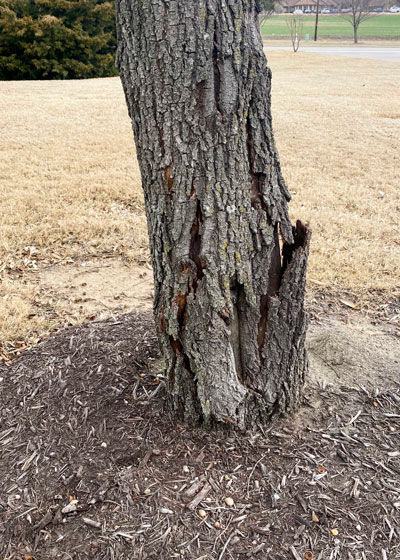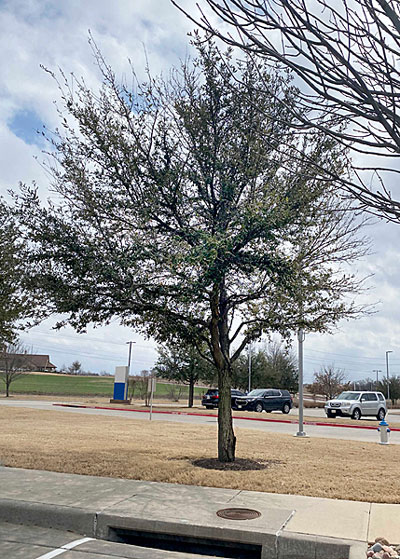Assessing Live Oak Damage One Year Later
The record cold spell in February last year took a real toll on many species of trees and shrubs. We are still seeing bark separating from the trunks of live oak trees.
The Texas A&M Forest Service has been using the phrase “radial shake” as it has referred to these vertical splits that released the bark from the trunks of the trees.
Most gardeners know how important bark is to the ongoing health and vigor of a shade tree. Loss of significant parts of the bark can cause a tree to die within a few months.

In the case of radial shake, the real question comes in whether the bark has been lost halfway or farther around the trunk at any one level. If a significant portion of the bark remains attached, the tree can generally heal and recover.

The next step is to walk back 20 or 30 feet and look at the tree overall. Does it have 50 percent or more of its regular leaf canopy? Now that live oaks are putting out their new leaves for this growing season, you should be able to tell. If it has a good complement of full-sized leaves, then it should be fine. If, on the other hand, its leaves have become sparse and weak, then you may have a tree that is in decline.
It’s always wise to have a certified arborist on site to look at the tree in person. He or she will be able to determine any developing problems and to guide you to the best possible care, often that you can do yourself.
